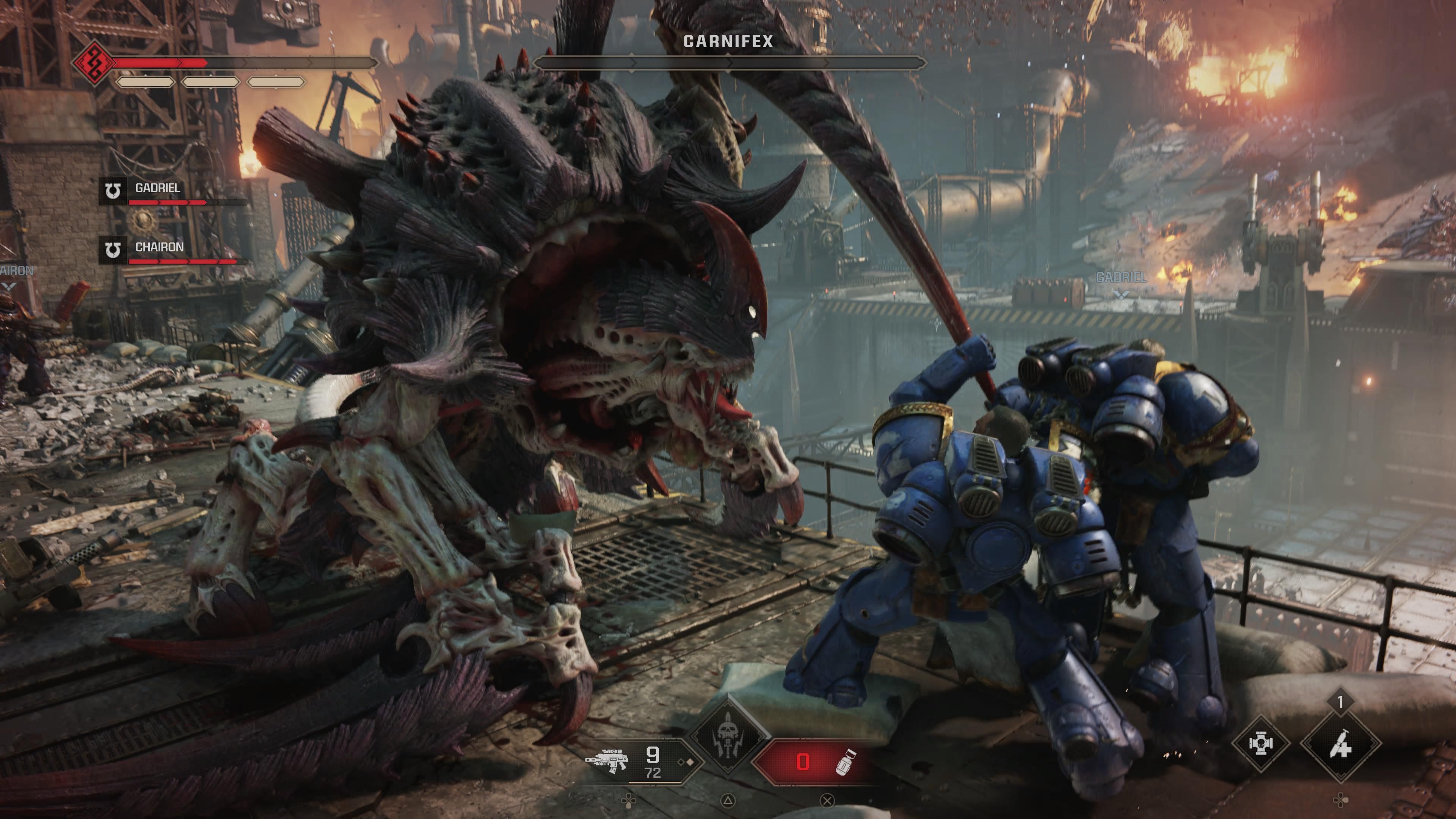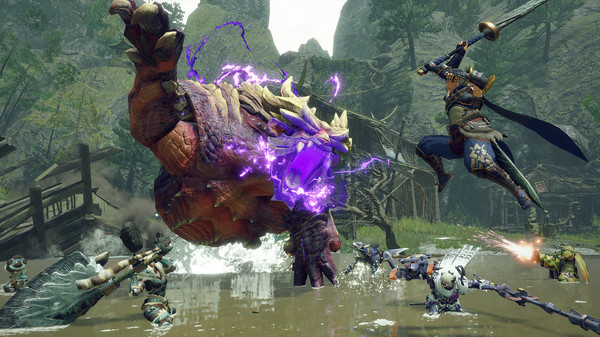I'm not sure where this one is going. My wife and I just got back last week from TennoCon 2025 ... TennoCon 10 and the trip was an absolute blast as it has been since we started going in 2018. (Note- 2020-2022 there was no physical convention as it was digital only due to the Pandemic but they still had an event even if only online) ... For those that don't know TennoCon is the annual convention hosted by Digital Extremes in their home town of London, Ontario for their game Warframe (Which I've talked about before) and now for their new game in development, Soulframe. It is a celebration, not just of the game, but of the community and the development team, where they give talks about the making of the game(s), and about the plans for the future of the game(s).
But it's also more than that, because the community that surrounds the game is amazing, great creators and amazing players that all share a common bond in Warframe. 2024 saw them expand the convention to two days, Friday and Saturday (Prior to that it was only a Saturday event), with registration, early Merch access and a party on Friday night before the main convention on Saturday. This year was much the same, but they expanded Friday a bit to include some of the autograph times, the Cosplay Contest (And some absolutely amazing entries this year I might add), and this year was a full blown, first ever, TennoCONcert. (The full TennoCon Cosplay, Concert and Panels is up on YouTube at LINK)
That's the OFFICIAL stuff ... but that's only a part of what TennoCon means ... Meeting friends from around the world that you only get to spend time with at the convention. Hanging out and talking about the reveals and announcements in the park Sunday afternoon after the Con is officially over and the Devs and Voice talent coming to hang out and chat with the players and fans. Many of us come into town early and leave late, for me this year it was 8 vacation days from work, time to relax, and see and hang out with friends that I hadn't seen since 2024. If you play warframe go to a TennoCon the energy there is amazing and invigorating ... if you don't play Warframe ... Have you tried Warframe? It's Free to Play on all platforms (except Android currently ... so PC, XBox, PS, Switch, and iOS) with cross-play and cross-save now.
Don't get me wrong, TennoCon has it's trials. Traveling is expensive and, since it's an international trip that creates it's own headaches, not to mention hotel, eating out, etc. The last few years have also had some trials with ticket sales ... namely they sell out FAST. London, ON isn't a huge city the convention center is good, but it can only fit so many people. This has a lot of fans calling to move to a larger venue such as Toronto. That bring another set of logistic issues, the London Convention Center has an advantage in that it is quite literally across the street from the Digital Extremes offices. Part of me wants to see them grow the convention further, make it even more of an event, and that will likely NEED a larger space ... They got the stadium this year for the Cosplay contest and Concert ... but unless they make that the main stage for TennoLive on Saturday as well, I'm not sure that it's a practical venue for the Con as a whole. But another part of me doesn't want them to leave London. So many of the traditions of the Convention are tied to local landmarks, restaurants, and, of course, the Sunday hang out at the park.
The announcements this year certainly have my interest, the upcoming expansions, new stories, new characters, and new abilities make the rest of 2025 and into 2026 a bright future. And the Roleplay rules coming in October will give me something to read and consider as well. Warframe is still growing, still innovating and evolving and I'll be very interested to see where it goes....
Had a great time there, and came back and the wife and I were feeling a bit nostalgic so we went back old school, and I mean WAY back ... we went back to EverQuest our first MMO. Just out of curiosity I looked today and Klikhizz, my main character and the character that my blogs were kind of based around, was created on July 9th 2000 ... so he just turned 25 this year. Now we started playing a little before that, we had played on other servers and I believe that Ralit was my first character on Torv. (I don't remember the full spelling, we all just called it Torv and it's since been server merged into Cazic-Thule ... rather fitting actually.) ... But even that was a coincidence ... My wife and I had characters elsewhere, but for one reason or another the server that our characters were on was down when we went to play one night, and, if I remember correctly, Torv was a newer server, having just launched in April 2000 with the release of the Ruins of Kunark expansion, so we went to play over there ... and, ultimately, the rest IS history. Because we found a community there and over the next several years, helped build it.
We played EverQuest solidly until their 8th or 9th expansion ... so Late 2004 or early 2005. I don't remember if we left before or after Dragons of Norrath launched if I'm being honest, and we've played off and on since then. Often coming back for anniversaries or several of the Progression server launches. To be honest I was shocked to realize that it was only 4-5 years that we played solid, it felt like so much more. I still have online friends that I made in that game so long ago, some I've met in real life over the years, some I never have managed. Many I've lost touch with, but still think about, still wonder what ever happened to them, how they're doing.
Of course we played EQII when it came out, and we enjoyed it. We re-formed the Scales of Pain, or original guild on EQ, and did quite a bit of content in that game, though we didn't play nearly as long and haven't gone back nearly as much. I mentioned before that EQ was, to me at least, the MMO that got most everything right, it was a sandbox and we built a story in it. (For the record, my wife and I did not start the Scales of Pain in EQ, we joined it and made it our family, she was made an officer, and later I was made Guild Leader ... I'm happy to say that the original founders told me later that though I changed the guild drastically they loved what I made it into and thanked me for making it what it became ... since then I have always considered the Scales mine .... of course a little of that is Klik's arrogance and confidence 😜)
I mentioned EQ: Next in earlier rambles here ... the elusive EQIII ... I hope it comes out, and if/when it does I hope that the developers do it right, go back to the original design and make EQ as a modern sandbox ... with a modern unified UI because coming back to EQ ... that UI is ... *shudders*
December 2024 saw EQ launch their 31st expansion "The Outer Brood" ... all expansions up to the 29th (Night of Shadows) is included in their Free-to-play part of the game, and purchasing The Outer Brood includes Laurion's Song, the 30th expansion which raised the level cap to 125. Certain features (such as the better NPC mercenaries, certain AAs, Spell tiers, and the like are put behind membership, of course, but that is to be expected in all honesty, though I DO wish they'd cut back on how often the 'upgrade to member' pop-ups came up during gameplay. Still, the wife and I are playing and enjoying the nostalgia, exploring some things we've never done and remember some things that we have done in the past. Remembering old friends, good times, and frustrating times ... and wondering how in the HECK we managed doing a lot of the things that we did without voice chat ....









